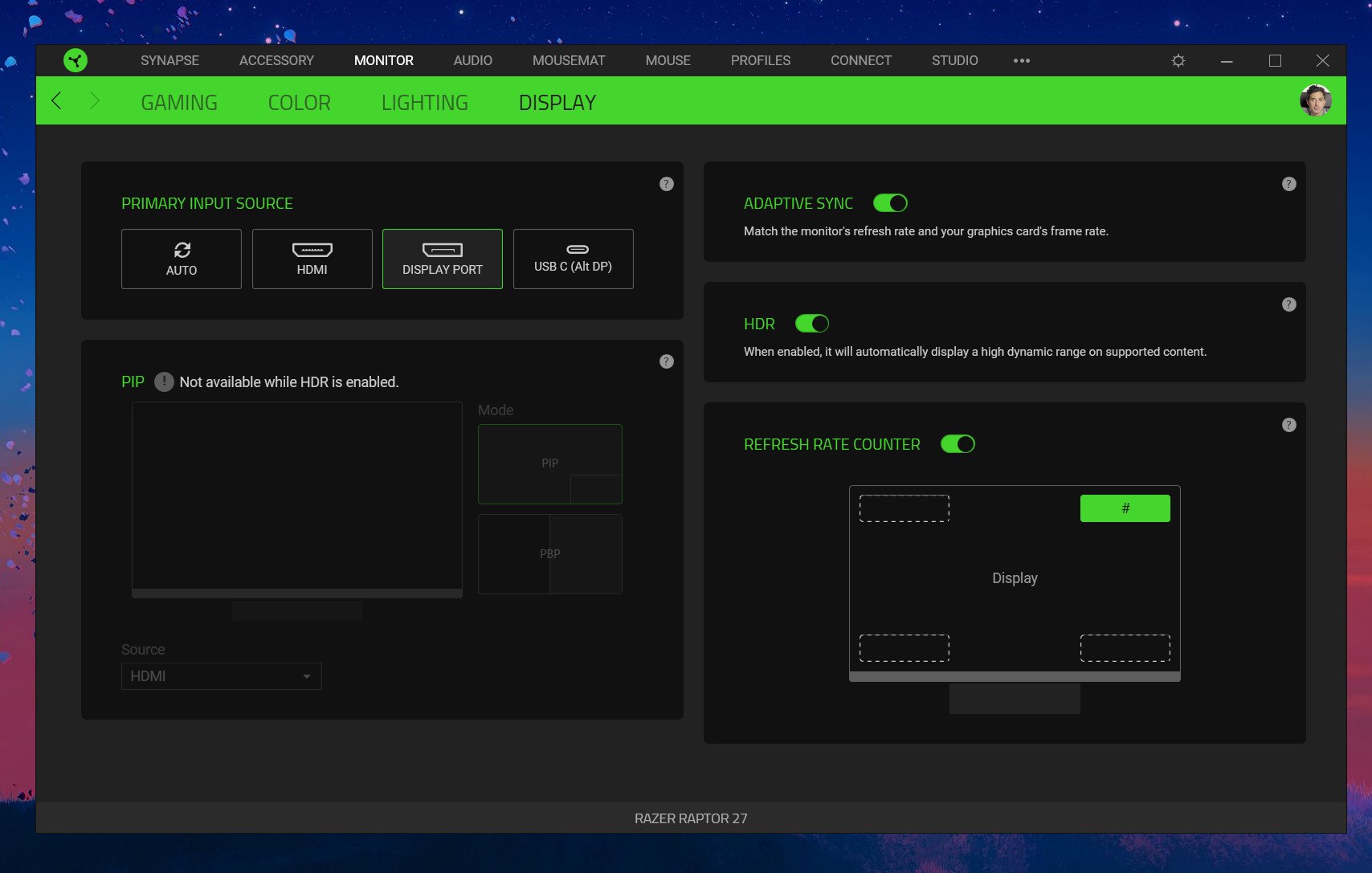Razer Raptor 27 (2021) review: The perfect display for working hard and gaming harder
Razer's first display is so good for gaming and work that I'm buying one.
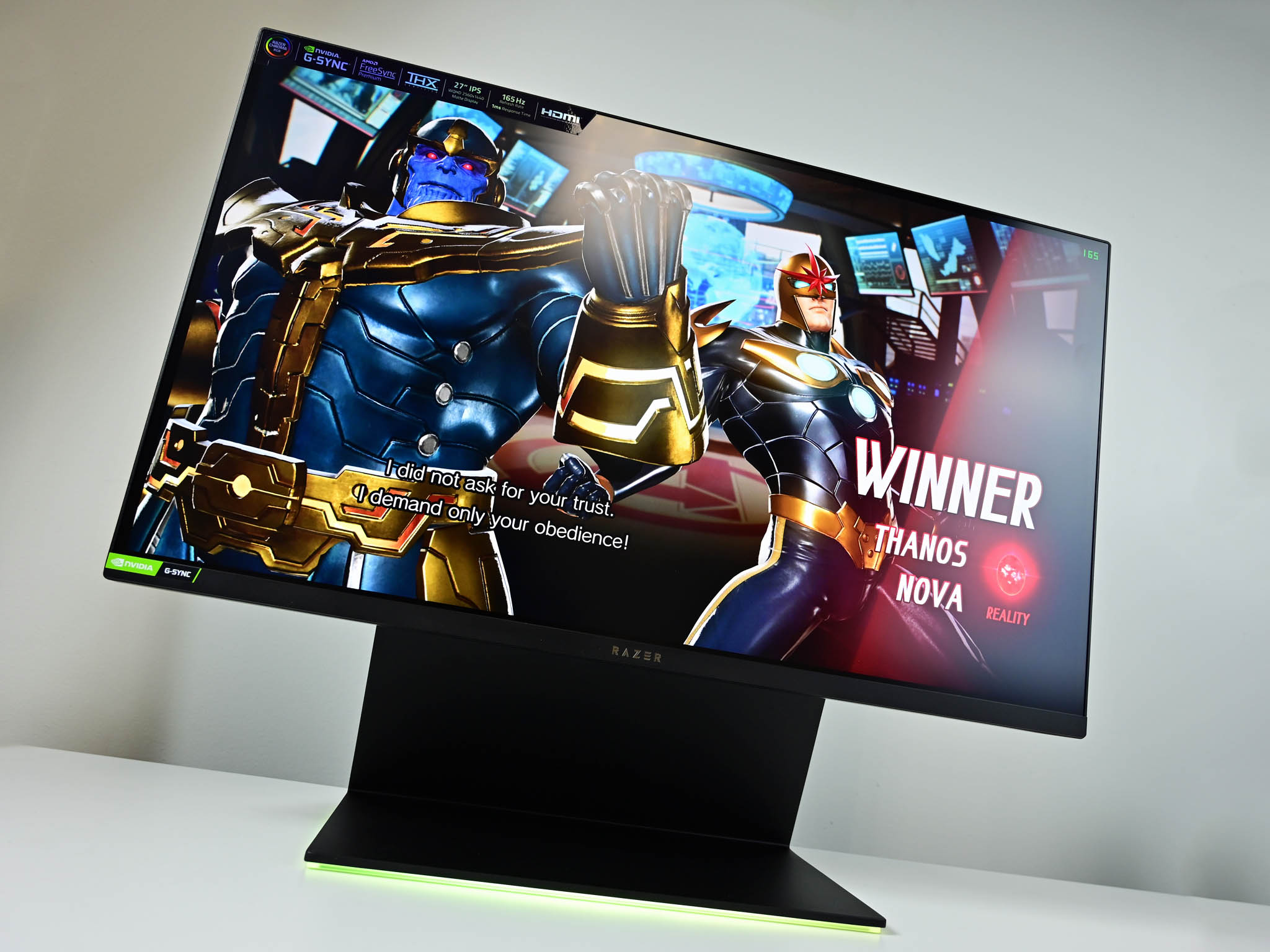
There are no shortages of quality gaming displays, but the gaming company Razer has never made one with its signature flair and style. The Razer Raptor 27 has had a long road since its "early-design-phase" announcement in early 2019 until it finally hit store shelves. It was also refreshed in mid-2021 with a faster 165Hz display with THX certification.
I've been using the 2021 Raptor 27 for the last few weeks. Here is what you need to know about it and why I ended up buying one.
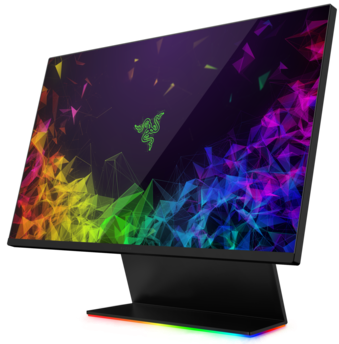
Bottom line: A gorgeous 27-inch gaming monitor that can walk the talk. The Raptor 27 is amazing for daily work for photo and video editing, watching a movie, and going at it hard for gaming. Unique features and a cool design set it apart from the rest. While the $800 price is high it's worth it for these abilities.
Pros
- Non-Glare IPS WQHD
- Outstanding color accuracy
- HDR + 144Hz (or 165Hz)
- Cable management and design
- NVIDIA G-Sync and AMD FreeSync
Cons
- Expensive
- Proprietary cables
- No Chroma RGB with VESA mount
By the numbers
Razer Raptor 27 specs at a glance
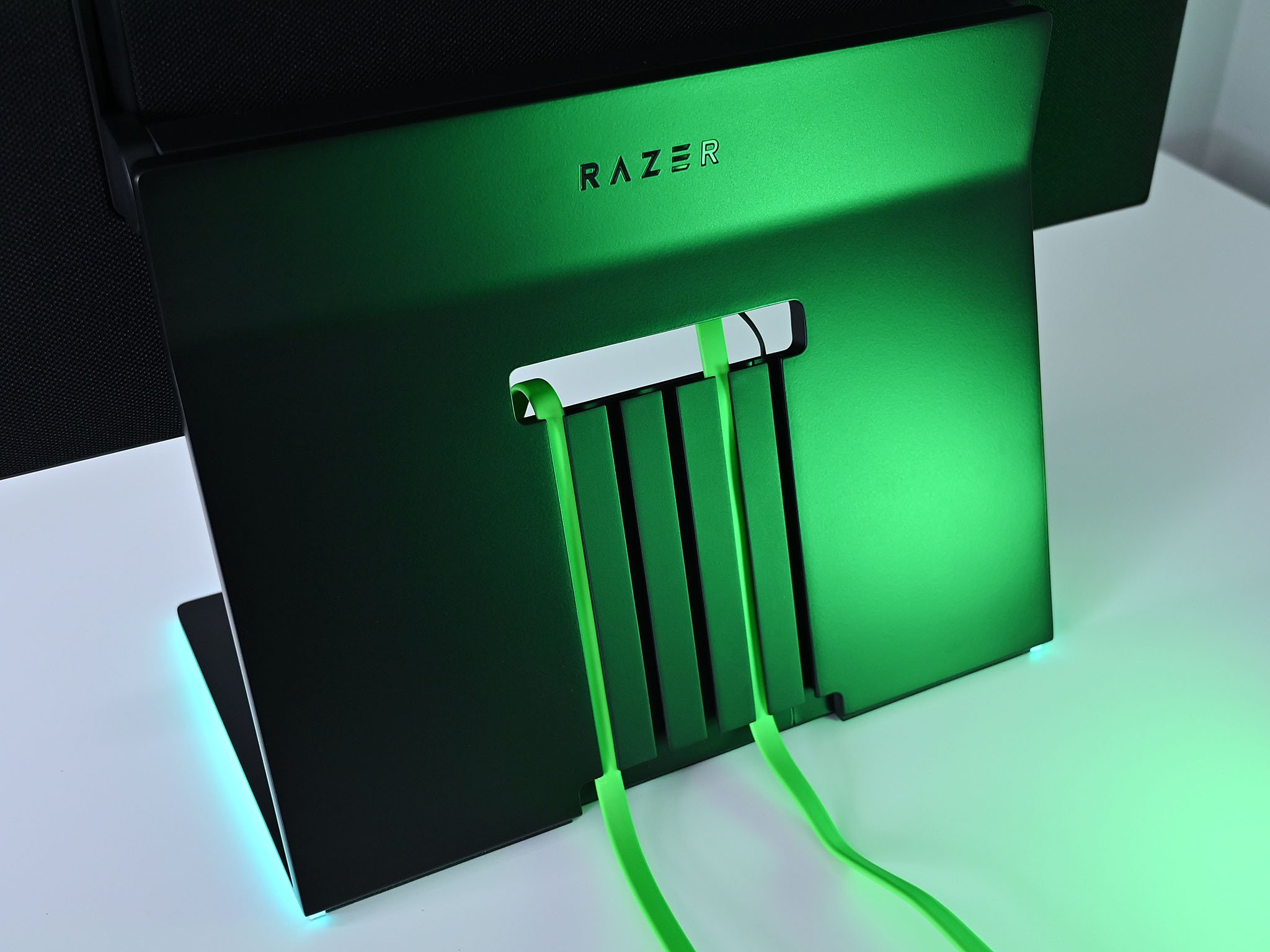
Razer is well known for designing products for gamers, so it should be no surprise the Raptor 27 ticks all the right boxes for this genre.
| Category | Specification |
|---|---|
| Screen size | 27 inches |
| Resolution | 2560x1440 (WQHD) |
| Refresh rate | 144Hz (2019) 165Hz (2021) |
| HDR | Yes (HDR400) |
| Factory calibrated | Yes Yes (THX) |
| Sync | NVIDIA G-Sync Compatible AMD FreeSync |
| Aspect ratio | 16:9 |
| Panel | Non-Glare IPS 178-degree-wide viewing angles |
| Response time | 1ms |
| Brightness | 420 cd/m² (350 typical) |
| Contrast ratio | 1000:1 |
| VESA | Yes ($100 mount) |
| Ports | One DisplayPort 1.4 One HDMI 2.0b Two USB Type-A 3.2 Passthrough One USB Type-C PD (DP1.4 in Alt-mode) |
It's worth mentioning that the Raptor 27 also supports picture-in-picture (PiP). This lets you run a secondary display source to the Raptor 27 besides the main PC. Users can pick half the display or just the corner to display this second screen.
On paper, these are all excellent features to have in any high-end display, especially one that uniquely transverse gaming and graphics work. But there's a lot more to this monitor than just the raw numbers.
Razer Raptor 27: Price and availability
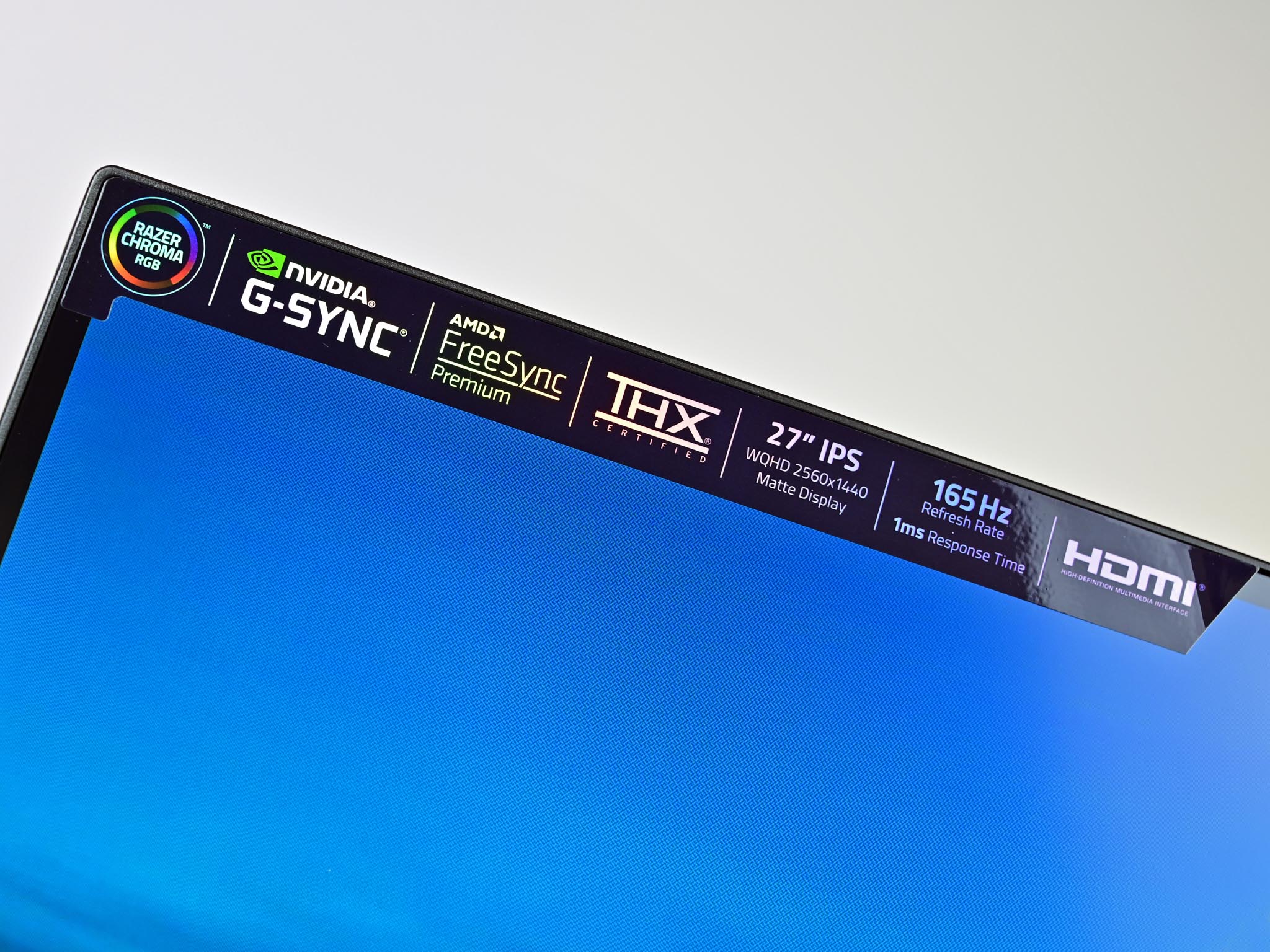
There are two models for the Razer Raptor 27 with different prices. While they are fundamentally the same design, the new model boasts a few new features. Both are sold through the Razer website and Amazon.
All the latest news, reviews, and guides for Windows and Xbox diehards.
The original late-2019 model features a 144Hz display, but the new 2021 version bumps that to 165Hz. In addition, the new model is now "the world's first THX-certified gaming monitor." That means each display undergoes "more than 400 individual tests to ensure color, tone, and images are displayed as their creators intended, for a stunning picture quality and level of detail." So, it is a lot like factory calibration but more rigorous.
As of December 2021, the Razer Raptor 27 (2020) 144Hz is now $500 (discounted), while the refreshed 2021 model with 165Hz is $800 ($100 more than the original).
Razer also now sells an optional $100 VESA mount, which works on both versions of Raptor 27.
Cool, but functional too
Razer Raptor 27: Design is outstanding
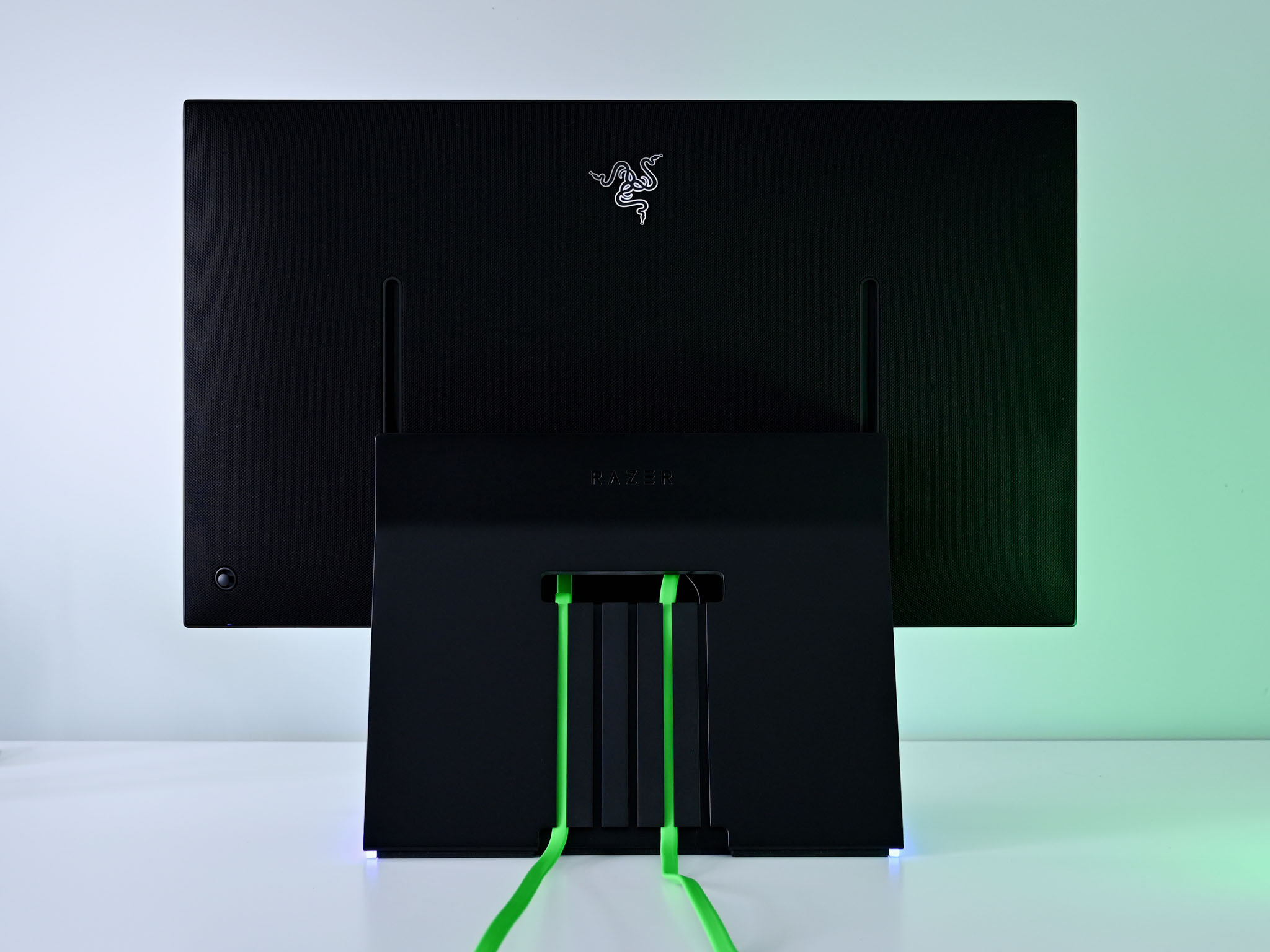
Razer brings some unique features to the table with the Raptor 27. The most obvious is the radical focus on cable management. While most companies solve managing HDMI and DisplayPort wires by putting a hole in the display stand and calling it a day, Razer created a whole new approach.
The Raptor 27 tilts at 90 degrees revealing all the inputs behind the display. The cable then routes through the monolith stand (which also is convenient for an Xbox controller) and puts them in separate channels. Each channel then has a snap-in metal cover that locks the cable into position while giving a clean look.
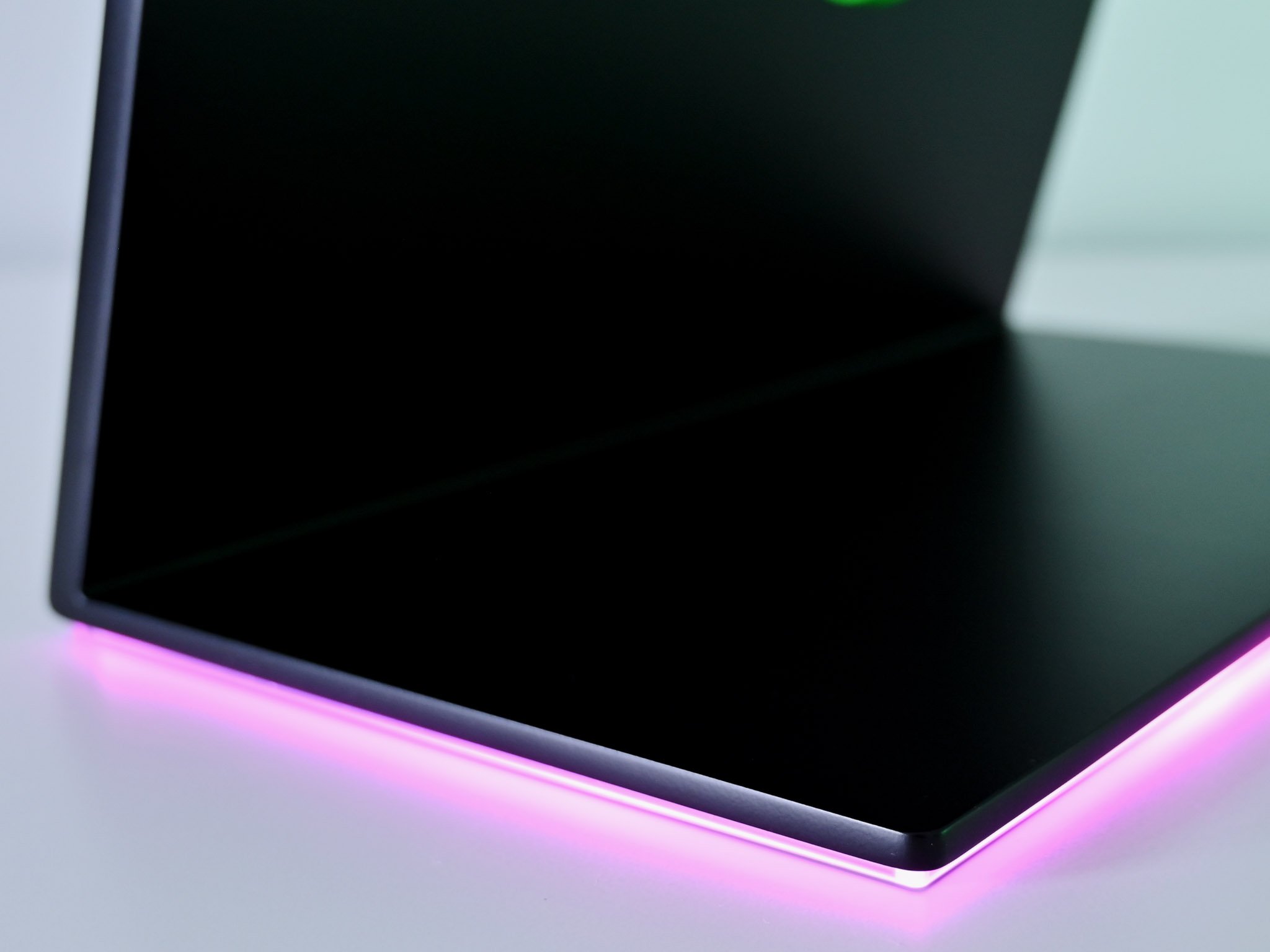
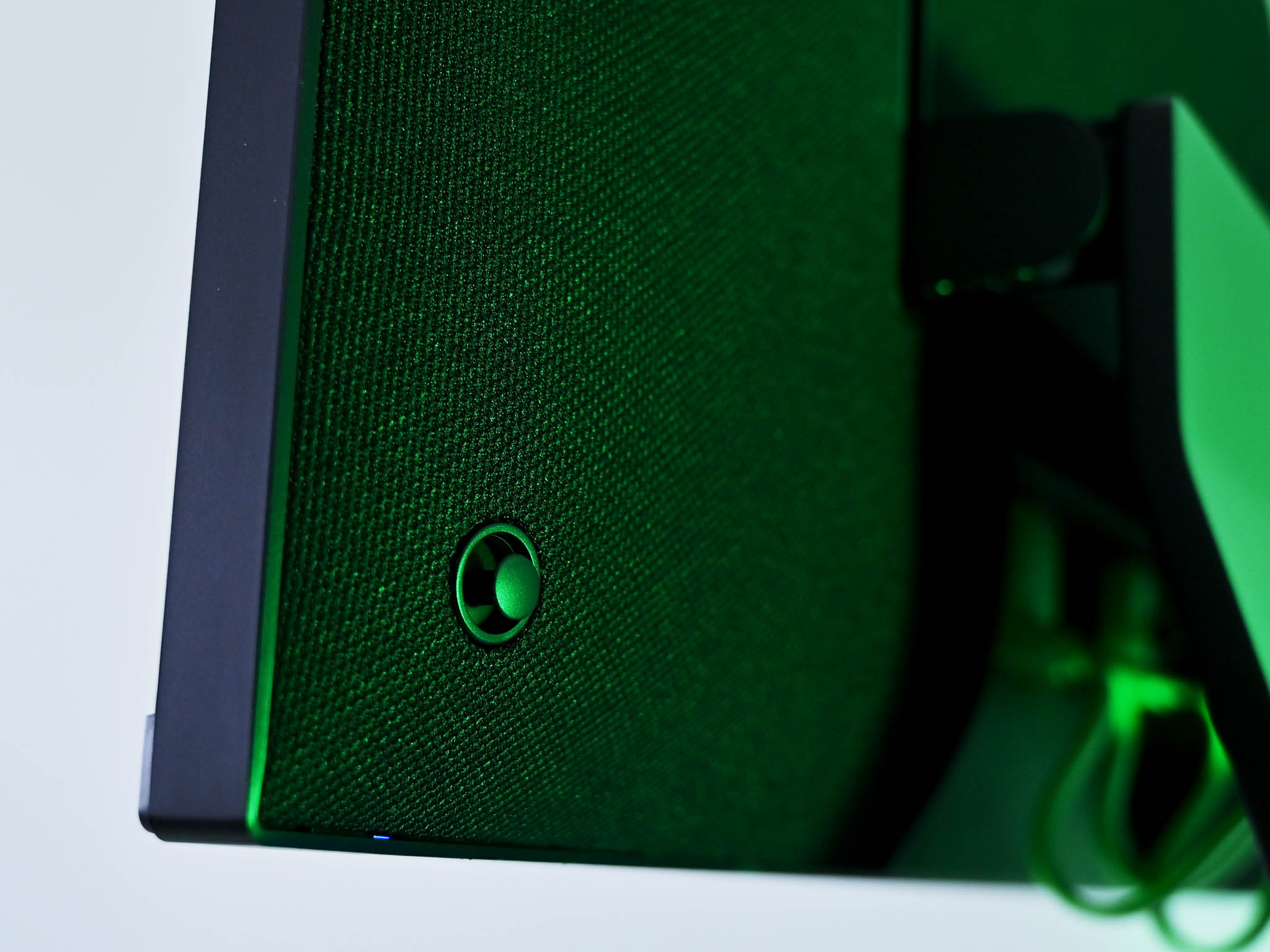
These cables are bright green and flat with angled connectors. They look fantastic, but, are proprietary (though any cable can work). The Raptor 27 hid the wires unlike any other display, and were you to spy them from the rear, they look super cool.
All this setup is a bit tedious with running the flat cables, snapping them in, etc., but for purists of minimal design, it is well worth the extra 15 minutes of setup.
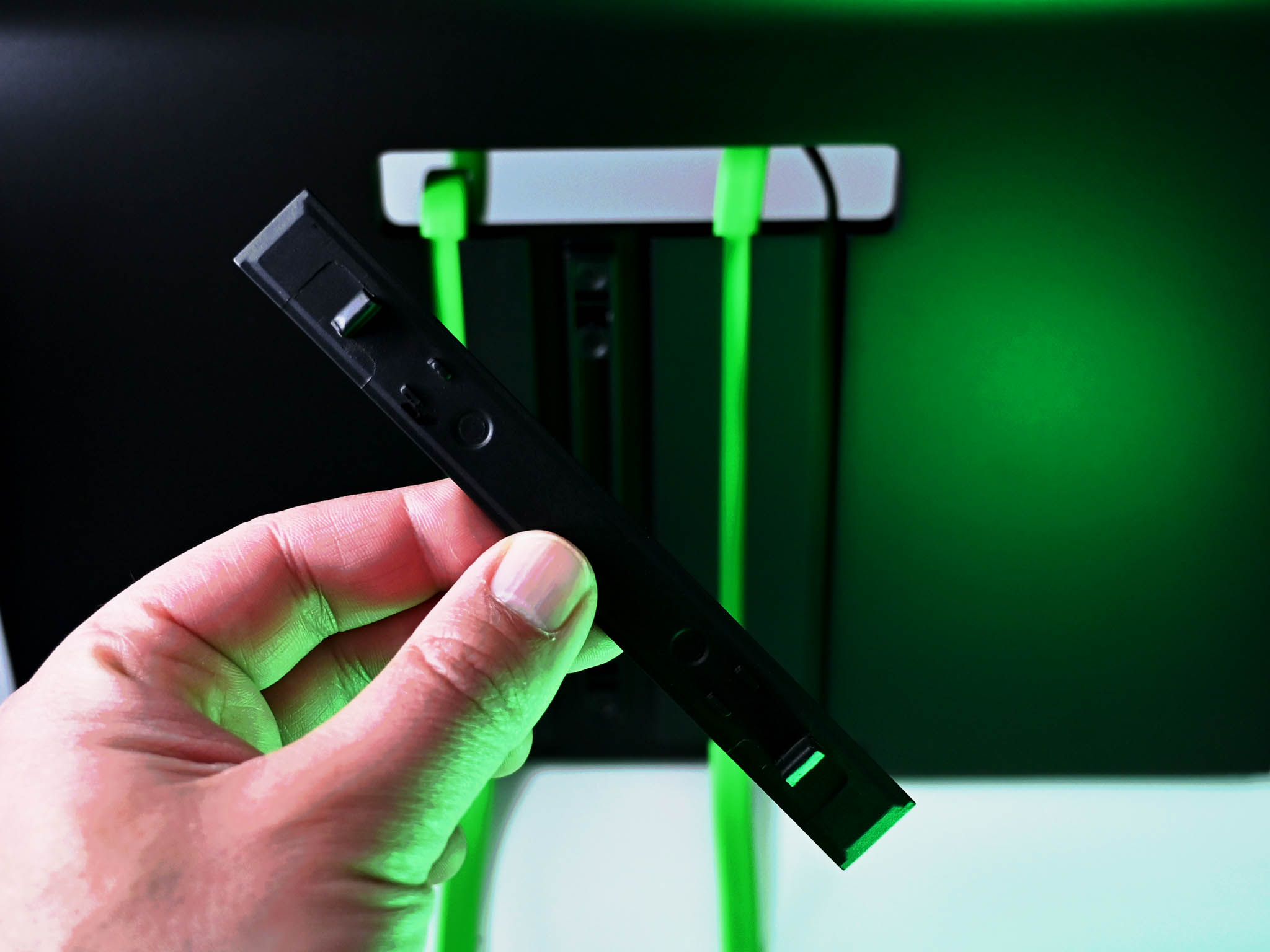
The display has a cloth back that feels premium. There's a Razer logo (that does not glow), and the screen has height-adjustment slots too.
Razer has managed to strike a remarkable balance between gaming, pro graphics, and a stylish design.
Perhaps the best feature, though, is the physical joystick on the rear bottom lower right. This nob can be used to adjust all the monitor's settings, and compared to many other displays is a joy to use. Of course, if you use a Type-C or Type-A cable to run back to your PC, you can use Razer's software to control all the settings that way — another nice trick.
No Razer peripheral would be complete without some RGB Chroma. Out of the box, the bottom of the display cycles through all the colors, but users can configure brightness (including turning it off), colors, and styles through the Razer Synapse software.
This is a good display
Razer Raptor 27: Color accuracy and performance

Many gaming monitors that are lower-cost push high refresh rates at the expense of color accuracy. I've run a few of these displays, but Razer finds the right balance between visual acuity and features for gamers that are not gimmicks.
For example, the Raptor 27 is 144Hz refresh (2019 model) or 165Hz (new 2021 version) with 1ms response. Many gaming displays now push 240Hz, but often at the expense of viewing angles and non-IPS technology. I run an HP OMEN Obelisk with a Core i9-9900K with 64GB of RAM and an NVIDIA GeForce RTX 2080Ti with RAID-0 SSDs. The number of times a first-person AAA shooter can come close to 200 frames per second without reducing graphic quality to low is very minimal. Razer using 144Hz is the sweet spot for gaming, period.
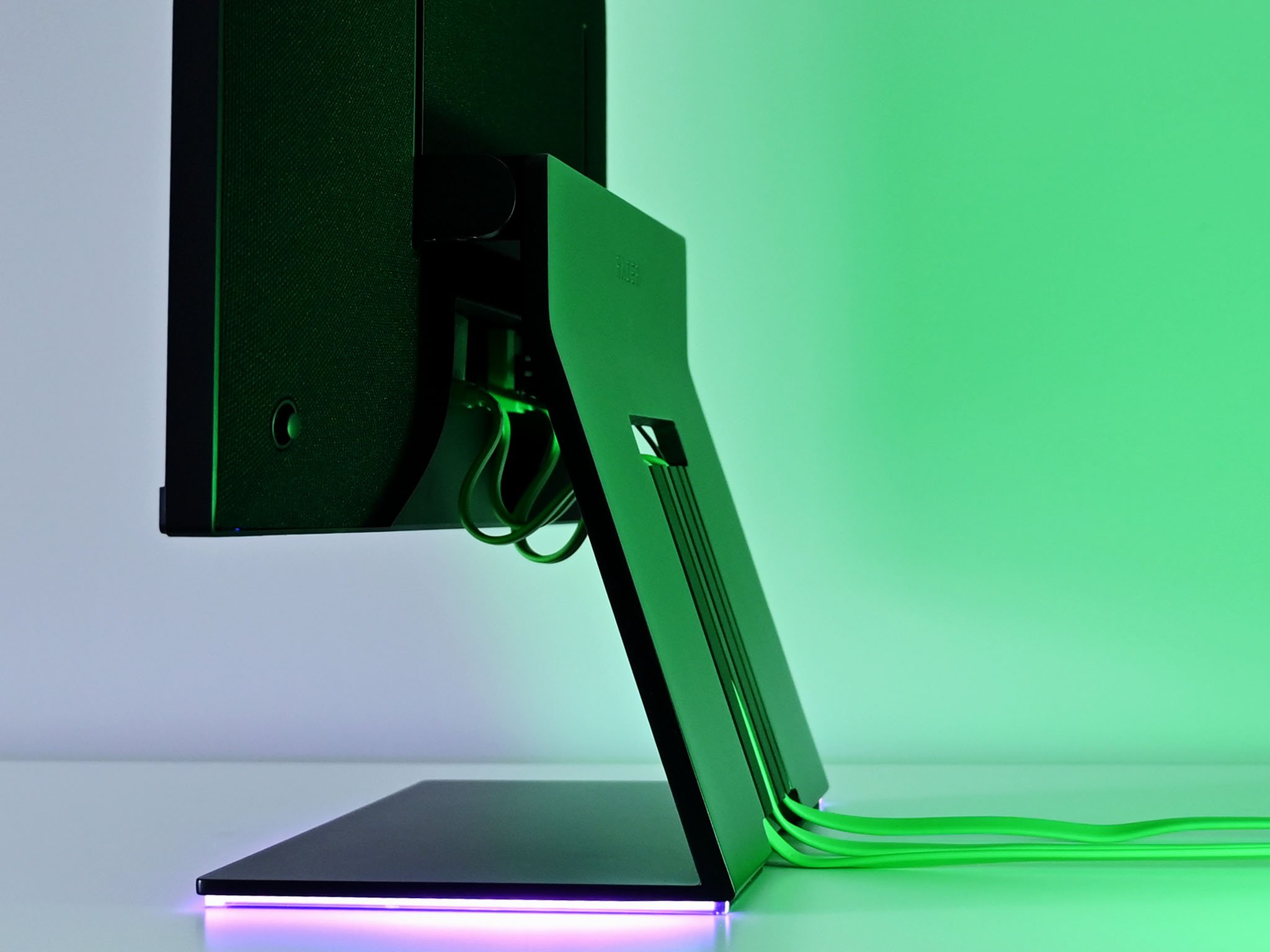
For color accuracy, Razer delivers. The company claims 95% for DCI-P3 — which is crazy high for a gaming display as that approaches the professional graphics monitor category. My review unit hit 96%. Adobe RGB is 90%, while sRGB is 100% putting this in a single category traversing gaming and graphics genres. Razer claims all displays are factory calibrated, and that seems to hold.
Features like HDR400 are also welcomed. While not "true" HDR where 1,000 nits of peak brightness is preferred, HDR400 does make watching movies and video content much better. The peak brightness of the Raptor 27 is close to 450 nits in my tests, while non-HDR settings are closer to 350 nits. Max brightness is also negatively affected by enabling reduced motion blur.
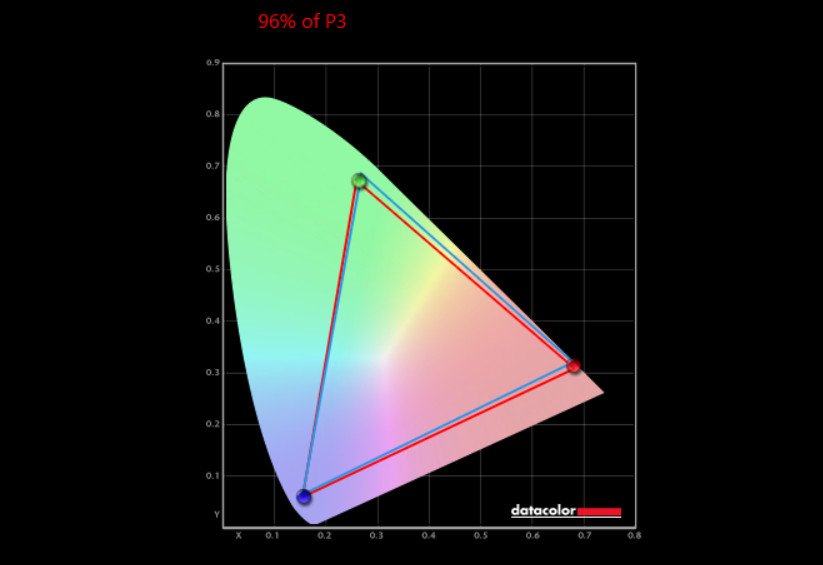
While this is not an official NVIDIA G-Sync (or G-Sync Ultimate) monitor as it lacks the physical hardware, it is a G-Sync Compatible display. The distinction is trivial if the screen avoids tearing during games, and that is what I experienced — it performs just like as expected. Ultra-Low Motion Blur (ULMB), combined with variable refresh rate and factory calibration, delivers an exceptional gaming experience. For those with AMD graphics cards, you also get AMD FreeSync too, making this display neutral for graphic card choice.
The non-glare coating is also superb for those who work in bright rooms and detest reflections.
There was no discernable backlight bleed when using lightbleedtest.com.
A few complaints
Things you will not like about Raptor 27
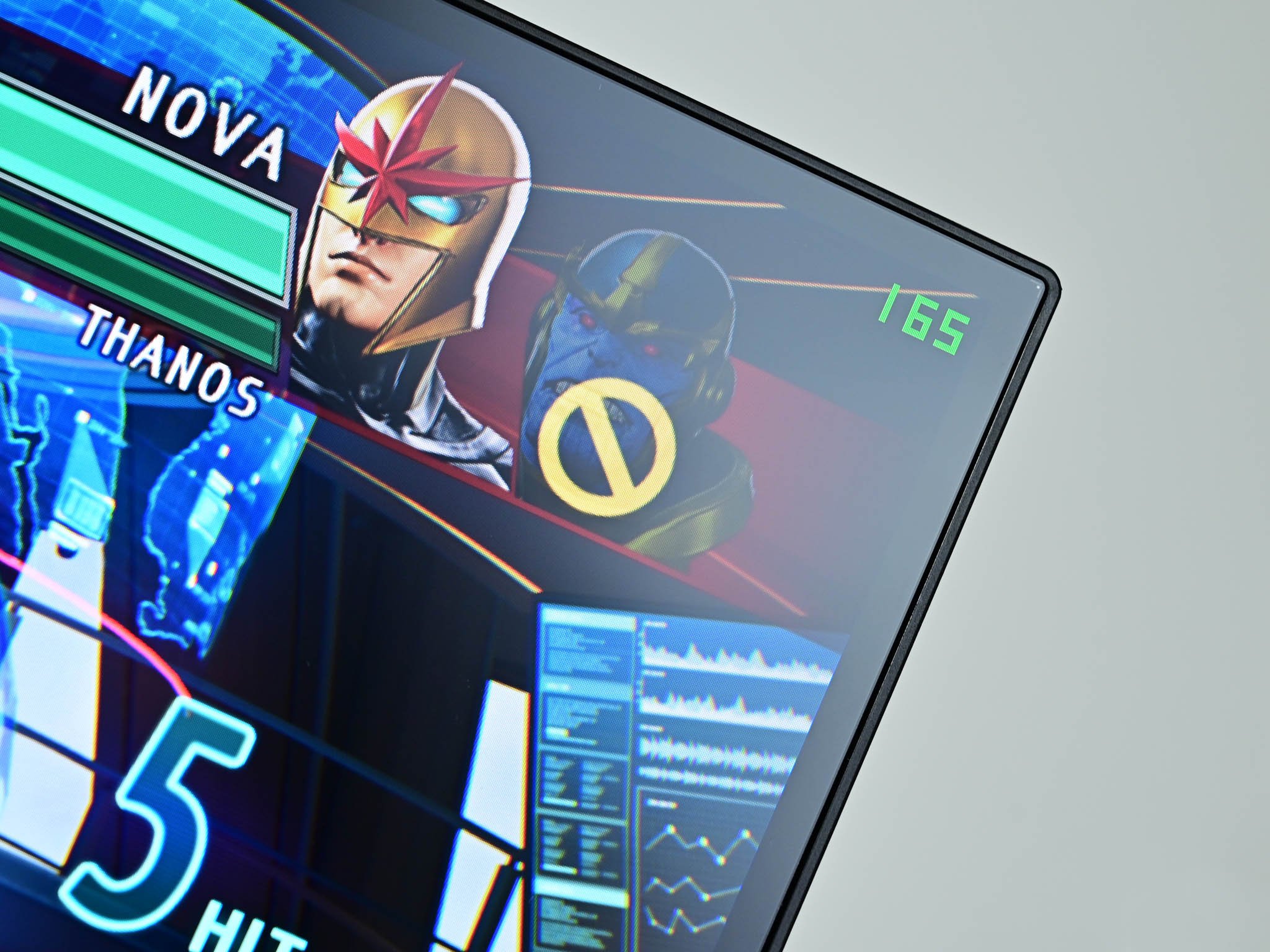
While the Raptor 27 is unique in design, appearance, and tie-in to the Razer ecosystem with Chroma RGB, the price for the 165Hz model is relatively high. That's not unusual for Razer products, but something to be aware of as we discuss the competition (below).
Those nifty flat green cables are custom for the Raptor 27. While any cable can technically work, Razer's are unique to complete the overall aesthetic. Luckily, all the wires are included, so unless you are prone to frequent wire changes, it should not be an issue. But if you lose a cable or break one (which seems unlikely), you'll have to contact Razer for a replacement.
Razer now sells a $100 VESA mount, which is pretty great if you buy two (or more) Raptor 27s as you can let them float on over desk while giving a clean, minimalist design. While the mount is pricey, it works well enough on either Raptor 27 model (2019 or 2021 SKUs). But, if you do mount this display, you lose the Chroma RGB lighting since it's all in the stand, which is a shame.
A few complaints
The competition
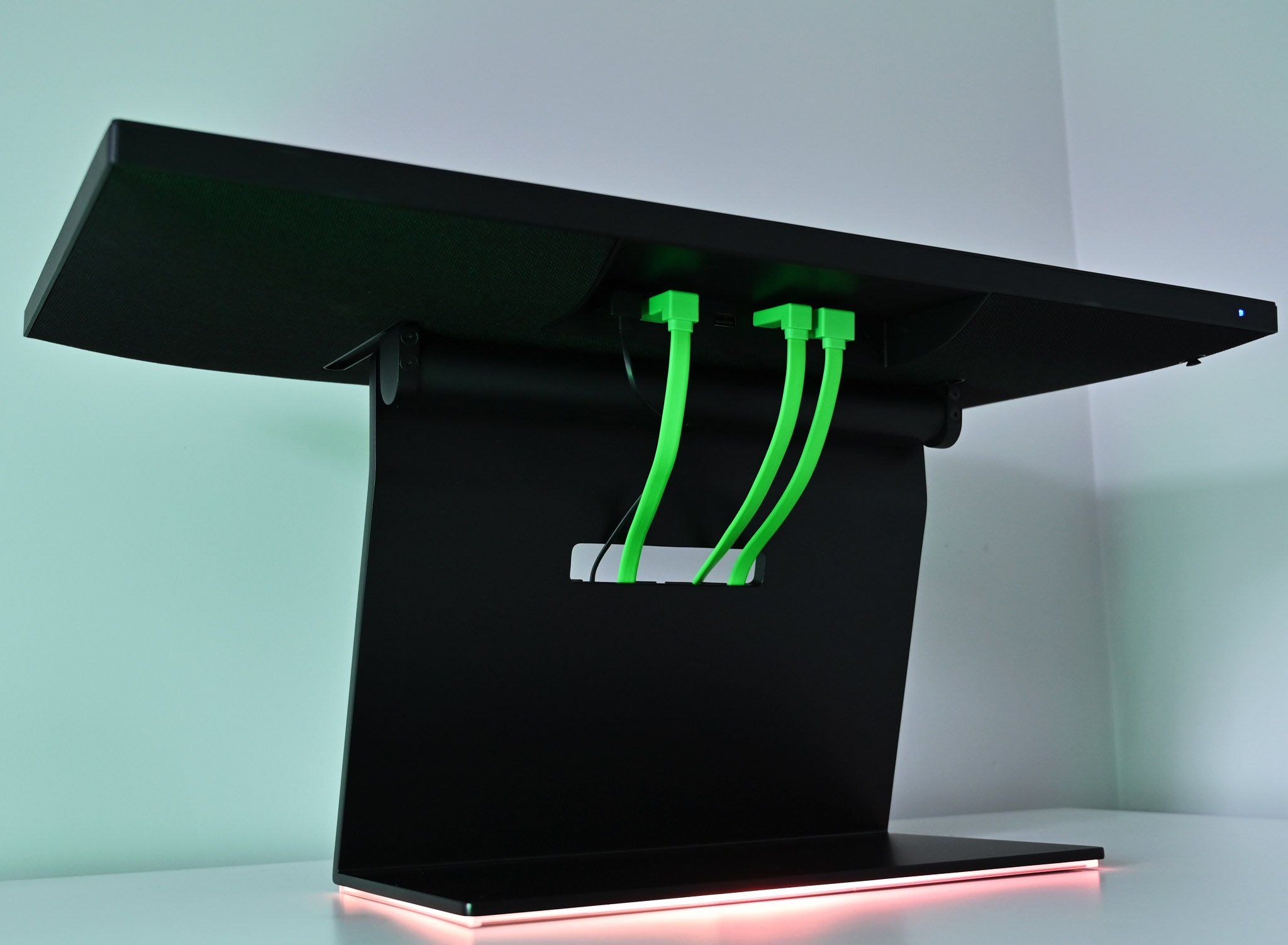
One could lament the price of the Raptor 27 165Hz at $800. But the excellent ASUS ROG PG279Q 27 (165Hz), which lacks HDR400, AMD FreeSync, and DisplayPort 1.4, is $850 at Amazon, putting it in the ballpark of the Raptor.
The same applies to the LG 27GL850-B 27, which is now discounted at a very affordable $347. You could also go bigger with the very well-reviewed $300 curved MSI Optix MAG321CQR. It's a 32-inch display with narrow bezels, a 144Hz refresh, and a similar WQHD resolution, but it lacks some higher-end features.
The ASUS TUF Gaming VG27AQL1A is just $289 and offers a solid WQHD resolution, HDR400, and 144Hz refresh, but only DisplayPort 1.2, no fancy cable management, and no Chroma RGB.
Conversely, as of December 2021, Razer is discounting the excellent Raptor 27 144Hz model to just $500, making it quite the deal for those more on a budget who really like this design.
You can get more ideas in our best 27-inch monitors guide.
An easy decision
Should you buy the Razer Raptor 27?
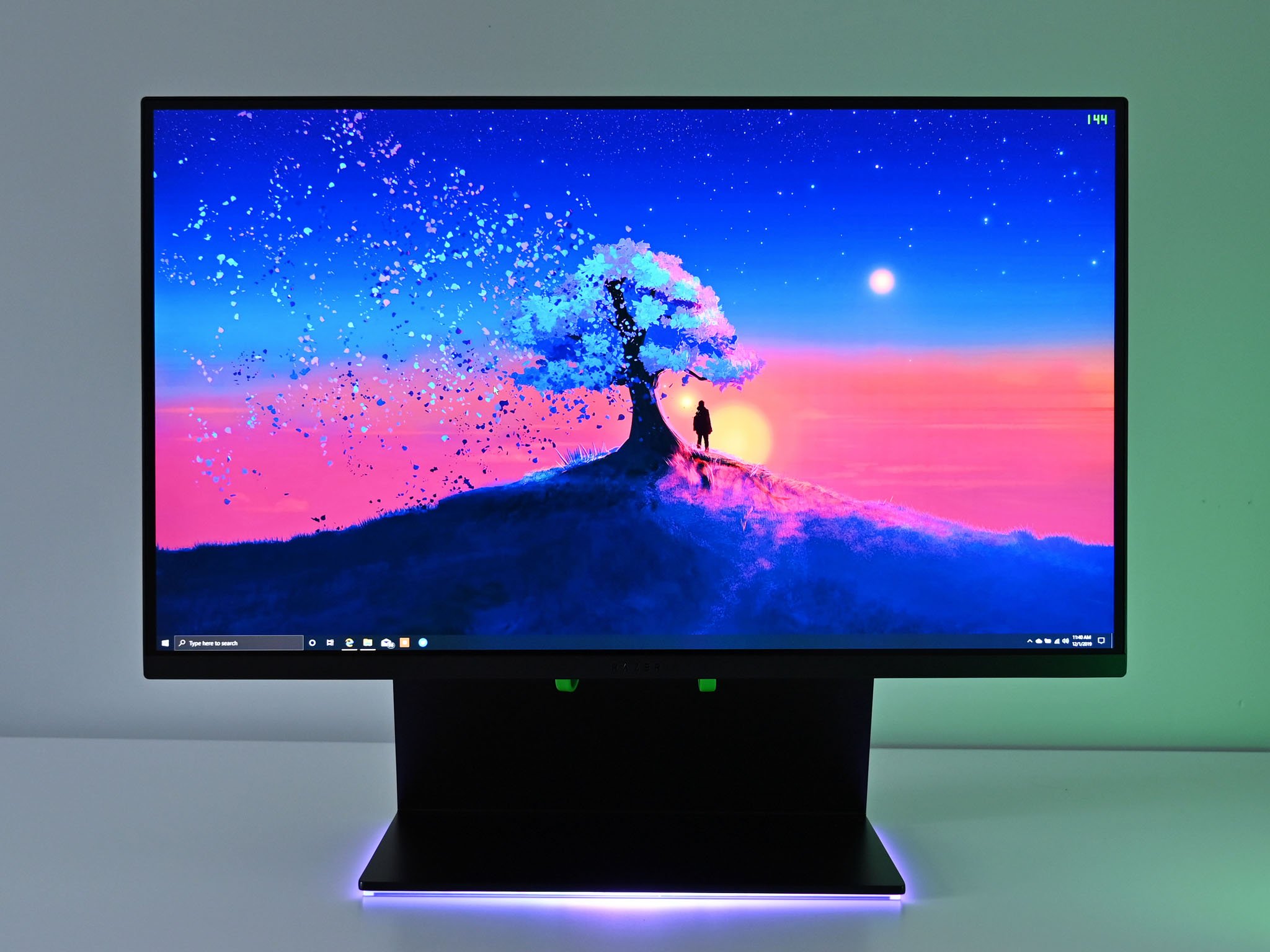
The Raptor 27 has won me over for a few reasons. The DCI-P3, AdobeRGB color accuracy, non-glare, and WQHD resolution make this a suitable choice for photo and video editing. For my daily work behind a PC, this monitor has been nothing but a joy to use. It's easy on the eyes, the HDR400 brings a slight boost to watching videos, and it just looks awesome on a desk with Philips Hue lighting and other Razer peripherals (like my Razer Basilisk Ultimate, Firefly V2 mat, and Razer Nommo speakers).
I bought the Razer Raptor 27 144Hz. If that's not an endorsement, I'm not sure what is.
But the Raptor 27 is not all work, unlike other "pro" graphics monitors. When I want to game, the Raptor 27 delivers with that ideal 165Hz refresh, 1ms response, motion-blur reduction, and adaptive-sync.
I'll also say that WQHD (2560x1440) is my favorite resolution for a desktop monitor. Sure, 4K is outstanding, but finding one with HDR, G-Sync/FreeSync, 1ms response, and 144Hz without breaking the bank is hard.
Then there's the look of the Raptor 27. It breaks the mold. Razer, though, didn't just make it look cool by adding RGB — a low bar — but instead solved a problem with fresh-looking cable management. It's an extreme solution, but there are a lot of PC gamers who want nothing but tight, clean, and minimal design, and the Raptor 27 fills that niche unlike any other display on the market.
While the new 2021 model is a modest improvement over the original, the $800 is still relatively high. I find diminishing returns on refresh rates past 120Hz, but that's me. That makes the late-2019 version with 144Hz even more enticing since Razer has it for just $500, a savings of $200 from its original price. Unless you're set on "needing" 165Hz, scooping up the 144Hz version is the way to go. Indeed, I purchased the 144Hz model in 2020 since I liked it so much, which is a resounding endorsement.

Perfect for gaming or graphics work
Razer's 2nd-gen monitor strikes the right balance between high-end gaming, consuming video content, and photo editing. The 27-inch anti-glare WQHD delivers exceptional color accuracy, brightness, THX certification, and a sweet 165Hz adaptive refresh sync that will satisfy AMD and NVIDIA fans.
Razer Raptor 27: Changelog, December 2021
This article was originally published in December 2019. It was updated in December 2021 with the following changes:
- Updated price and availability information.
- Added new info about the 2021 165Hz model.
- Added new photos.
- Adjusted formatting.
- Added more to criticisms.
- Updated competition and conclusion sections.
- Updated specifications.
- Updated links.

Daniel Rubino is the Editor-in-chief of Windows Central. He is also the head reviewer, podcast co-host, and analyst. He has been covering Microsoft since 2007 when this site was called WMExperts (and later Windows Phone Central). His interests include Windows, laptops, next-gen computing, and wearable tech. He has reviewed laptops for over 10 years and is particularly fond of 2-in-1 convertibles, Arm64 processors, new form factors, and thin-and-light PCs. Before all this tech stuff, he worked on a Ph.D. in linguistics, performed polysomnographs in NYC, and was a motion-picture operator for 17 years.
